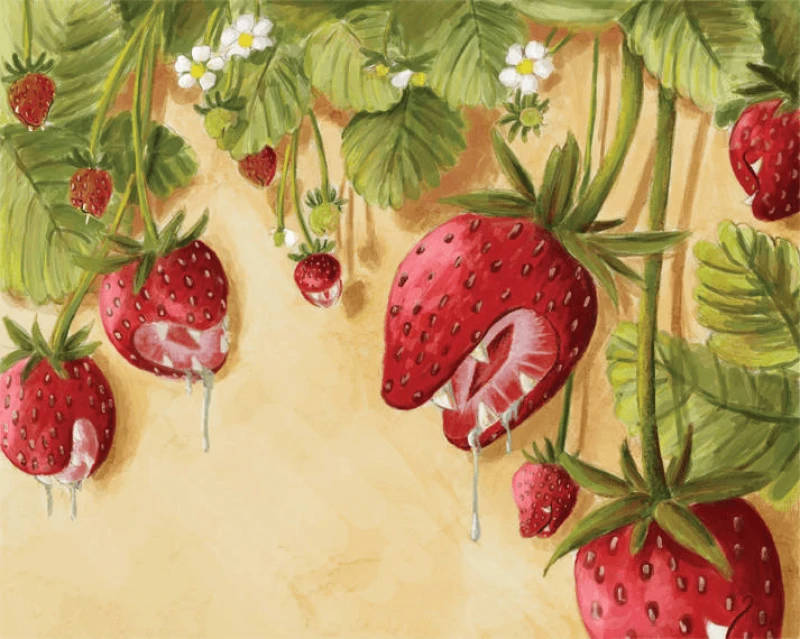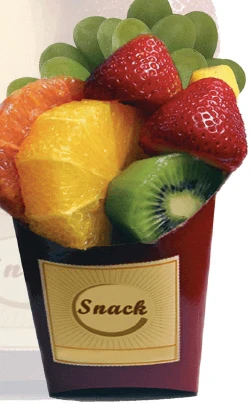Viewpoint: Pesticides in strawberries? Environmental Working Group scares people about safe produce but ignores chemicals applied by their organic mega donors
Viewpoint: Pesticides in strawberries? Environmental Working Group scares people about safe produce but ignores chemicals applied by their organic mega donors


For the scientifically literate, those with at least the intellect of 17th century peasants who understood ‘the dose makes the poison’, strawberries are healthy and safe. as is the rest of the EWG Dirty Dozen list that just happens to never include organic food sprayed with toxic chemicals the day it’s shipped to Whole Foods.
This year, strawberries will be even better than usual. There are two reasons: rain and a cooler spring. Those mean larger fruit, and also extended shelf life, which means less waste. That is a win on every level.
 Larger fruit has been a goal of farmers for the last 12,000 years and it’s no different today – but modern agriculture has meant that instead of needing to be born lucky into a natural breadbasket suitable for growing food, people can have diverse locally-grown diets everywhere. Irrigation and optimization mean greater yields even in once poor regions. EWG will still roll out images of Big Pharma vaccine needles stuck into strawberries but it’s not true today any more than it ever was.
Larger fruit has been a goal of farmers for the last 12,000 years and it’s no different today – but modern agriculture has meant that instead of needing to be born lucky into a natural breadbasket suitable for growing food, people can have diverse locally-grown diets everywhere. Irrigation and optimization mean greater yields even in once poor regions. EWG will still roll out images of Big Pharma vaccine needles stuck into strawberries but it’s not true today any more than it ever was.
Even labor will have an easier time, notes Jayesh Samtani, associate professor in the School of Plant and Environmental Sciences at Virginia Tech: “With larger strawberries, fewer fruits are needed to fill the clamshell container. The whole idea being that the fewer berries to fill the box, the more efficient the harvest process.”
Hank Campbell founded Science 2.0 in 2006, and writes for USA Today, Wall Street Journal, CNN, and more. His first book, Science Left Behind, was the #1 bestseller on Amazon for environmental policy books. Follow Hank on Twitter @HankCampbell
A version of this article was originally posted at Science 2.0 and has been reposted here with permission. Any reposting should credit the original author and provide links to both the GLP and the original article. Find Science 2.0 on Twitter @science2_0

 | Videos | More... |

Video: Nuclear energy will destroy us? Global warming is an existential threat? Chemicals are massacring bees? Donate to the Green Industrial Complex!
 | Bees & Pollinators | More... |

GLP podcast: Science journalism is a mess. Here’s how to fix it

Mosquito massacre: Can we safely tackle malaria with a CRISPR gene drive?

Are we facing an ‘Insect Apocalypse’ caused by ‘intensive, industrial’ farming and agricultural chemicals? The media say yes; Science says ‘no’
 | Infographics | More... |

Infographic: Global regulatory and health research agencies on whether glyphosate causes cancer
 | GMO FAQs | More... |

Why is there controversy over GMO foods but not GMO drugs?

How are GMOs labeled around the world?

How does genetic engineering differ from conventional breeding?
 | GLP Profiles | More... |

Alex Jones: Right-wing conspiracy theorist stokes fear of GMOs, pesticides to sell ‘health supplements’




 Viewpoint — Fact checking MAHA mythmakers: How wellness influencers and RFK, Jr. undermine American science and health
Viewpoint — Fact checking MAHA mythmakers: How wellness influencers and RFK, Jr. undermine American science and health Viewpoint: Video — Big Solar is gobbling up productive agricultural land and hurting farmers yet providing little energy or sustainabilty gains
Viewpoint: Video — Big Solar is gobbling up productive agricultural land and hurting farmers yet providing little energy or sustainabilty gains Fighting deforestation with CO2: Biotechnology breakthrough creates sustainable palm oil alternative for cosmetics
Fighting deforestation with CO2: Biotechnology breakthrough creates sustainable palm oil alternative for cosmetics Trust issues: What happens when therapists use ChatGPT?
Trust issues: What happens when therapists use ChatGPT? California, Washington, Oregon forge immunization alliance to safeguard vaccine access against federal undermining
California, Washington, Oregon forge immunization alliance to safeguard vaccine access against federal undermining 30-year-old tomato line shows genetic resistance to devastating virus
30-year-old tomato line shows genetic resistance to devastating virus The free-range chicken dilemma: Better for birds, but with substantial costs
The free-range chicken dilemma: Better for birds, but with substantial costs ‘You have to treat the brain first’: Rethinking chronic pain with Sanjay Gupta
‘You have to treat the brain first’: Rethinking chronic pain with Sanjay Gupta
